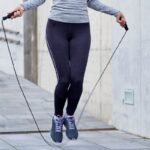Many fitness enthusiasts grapple with the question of whether cardio should be incorporated into their leg day routine. Some worry that cardio will hinder muscle growth, while others are concerned about losing the gains they’ve worked hard for. This concern is understandable; after all, the goal of leg day is often to maximize muscle development and strength. This guide will equip you with the knowledge and strategies to seamlessly integrate cardio into your leg day, maximizing your results without hindering your progress. We’ll explore the synergistic relationship between cardio and leg development, debunking myths and providing practical tips for optimizing your training.
Cardio on Leg Day? Yes, and Here’s Why
Adding cardio to leg day isn’t about sacrificing gains, it’s about amplifying them. Cardio enhances blood flow, delivering oxygen and nutrients to your hard-working leg muscles. This improved circulation speeds up recovery, reduces soreness, and promotes better muscle growth. Instead of viewing cardio as a competing priority, think of it as the perfect complement to your strength training routine.
Science backs this up: a study from the Journal of Strength and Conditioning Research found that combining cardio with strength training improves both endurance and power. Moderate-intensity activities like cycling, running, or swimming can aid muscle recovery and maintain strength, while also burning fat. When done strategically, cardio becomes an asset, helping you build a balanced fitness foundation of power, stamina, and long-term results.
Maximize Leg Growth: The Cardio-Leg Day Strategy
Cardio can actually support muscle protein synthesis (MPS). A study published in the *American Journal of Physiology-Endocrinology and Metabolism* demonstrated that specific types of cardio can be beneficial to MPS. Optimizing your cardio routine, with specific types and intensity, is key. Proper pacing is key for efficient muscle growth, and this is where the right cardio routine comes into the picture.
Proper integration of cardio into your leg day routine is paramount to achieving your muscle-building goals. Don’t just haphazardly add cardio. Focus on strategically placing cardio within your routine to optimize its benefits for both strength and endurance. A structured approach to incorporate cardio with appropriate rest will lead to remarkable results. You’ll find that you are able to work through more challenging workouts with a higher degree of success.
Leg Day Cardio: Tips, Tricks & Best Practices
Types of Cardio for Leg Day: HIIT vs. LISS
You have choices when it comes to cardio on leg day, with each method yielding different results. High-intensity interval training (HIIT) involves short bursts of intense activity followed by rest periods. Low-intensity steady-state (LISS) cardio, on the other hand, maintains a lower intensity and longer duration. Consider your specific goals when choosing between these types.
Cardio Timing: Before or After Your Workout?
When considering the timing of your cardio, the choice between doing it before or after your leg workout depends on your personal preference and training objectives. If your primary aim is to maximize muscle growth, performing cardio *after* your leg workout might be beneficial. This allows you to focus your energy on the compound movements and weights first, optimizing your form and focus.
Volume and Intensity: How Much Cardio is Too Much?
Finding the right balance between volume and intensity is crucial to avoid overtraining and optimize your results. It is important to pay attention to your body and not push it beyond its limits. Begin with a manageable volume, and gradually increase the intensity and duration of your cardio as your fitness level improves.
Tailoring Your Cardio Routine to Your Individual Needs: A Personalized Approach
Every individual is different; therefore, your approach to cardio should be individualized and adapted to your needs. Factors such as your current fitness level, workout goals, and any underlying health conditions must be considered when designing your cardio program. Consult with a qualified professional to create a personalized program that fits your specific requirements and expectations.
Common Mistakes to Avoid on Leg Day Cardio
Avoid neglecting proper warm-up and cool-down procedures before and after your cardio sessions. Overtraining is another common mistake, so be mindful of listening to your body and adjusting your workouts accordingly. Failing to incorporate adequate rest and recovery into your routine will also hinder progress. Addressing these common pitfalls will lead to more productive training sessions and significant results.
Sample Leg Day Workouts Integrating Cardio
Here are a few sample workouts you can use as a guide:
Workout 1: Quick Leg and Cardio Blast
Warm-Up: Light jog: 5–10 minutes to prepare your body for the workout.
Main Workout:
- Squat Pyramid:
- Perform 1 squat, run 100m.
- Increase by 1 squat per round, followed by a 100m run.
- Continue until you reach 10 squats (total: 55 squats and 1,000m running).
- Deadlifts or Romanian Deadlifts:
- 3 sets of 5–10 reps.
- Rest 60 seconds between sets.
- Cardio Circuit:
- Sprint 200m.
- Weighted lunges (20 reps per leg).
- Farmer’s carry (50m).
- Kettlebell swings (20 reps).
- Kettlebell goblet squats (10 reps).
- Repeat the circuit 3–5 times.
Duration: Approximately 30–45 minutes.
Workout 2: Cardio and Core Combo
Warm-Up: Run or cycle for 5 minutes to get your body moving.
Main Workout:
- Cardio Challenge:
- Choose a cardio activity (running, cycling, elliptical) and perform at a high intensity for 5 minutes.
- Leg Exercise:
- Perform squats or lunges for 1 minute.
- Core Exercise:
- Do planks or sit-ups for 1 minute.
Repeat:
- Cycle through the cardio, leg, and core exercises for 30–45 minutes.
Workout 3: Plyometric and Cardio Mix
Warm-Up: Light jog or walk for 5–10 minutes to loosen up.
Main Workout:
- Plyometric Jumps:
- Feet-together bounds: 3 sets of 5 reps.
- Squat jumps: 3 sets of 10 reps.
- Cardio Intervals:
- Sprint for 1 minute, then walk or jog for 1 minute.
- Repeat for 14 minutes.
Cool Down:
- Gentle cycling or walking for 5–10 minutes to lower your heart rate.
Remember to adjust these workouts based on your individual fitness level and goals. Remember to listen to your body, and consult with a healthcare professional if you have any concerns.








